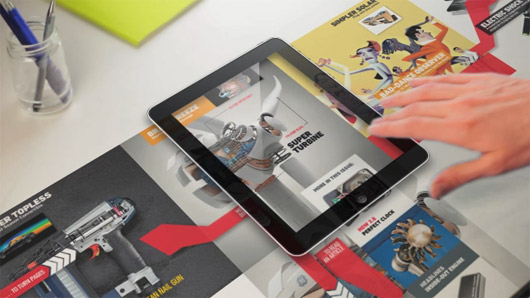Will Wiles, the Deputy Editor of the design magazine Icon, asked us recently to contribute to a special issue on Mobiles Phones alongside James Bridle, Kazys Varnelis, Marko Ahtisaari and Will Self, among others.
I wrote a short piece on smartphones as ‘companion species’, that reflects a lot of ongoing themes and discussions in the studio around designing the behaviour of sensate devices with ‘fractional intelligence‘.
They see the world differently to us, picking up on things we miss.
They adapt to us, our routines. They look to us for attention, guidance and sustenance. We imagine what they are thinking, and vice-versa.
Dogs? Or smartphones?
Mobile devices (can we still call them phones?) are being packed full of sensors, processing power. They are animated by ever-more-sophisticated software, dedicated to understanding the world around them (in terms of advances in computer vision and context-awareness) and understanding us (speech recognition and adaptive ‘agent’ software such as Apple’s ‘Siri’)
They are moving – somewhat awkwardly – from being our tools to becoming our newest companion species.
Donna Haraway, theorist on our transformation into cyborgs, published ‘The Companion Species Manifesto’ in 2003. It addresses the relationship between domestic dogs and humans, but there is much in there to inspire designers of smartphones, apps and agents.
“Cyborgs and companion species each bring together the human and non-human, the organic and technological, carbon and silicon, freedom and structure, history and myth, the rich and the poor, the state and the subject, diversity and depletion, modernity and postmodernity, and nature and culture in unexpected ways.”
Using inspirations from theory such as Haraway, and fiction – such as Philip Pullman’s ‘Daemons’ from his ‘Dark Materials’ books – we can perhaps imagine a near-future that is richer and weirder than the current share-everything-all-the-time/total-gamified-personal-productivity obsessions of silicon valley.
A future of digital daemons would be one of close relationships with software that learned and acted intuitively – perhaps inscrutably at first, but with a maxim of ‘do no harm, with maximum charm’.
Intel’s Genevieve Bell recently spoke of the importance of designing relationships with – and crucially, between our technologies – so that we not in the centre of an arms-race of ever-more-complex 1-to-1 interactions with our phones, tablets and apps. She memorably quoted a research subject that likened her collection of digital devices to a ‘needy backpack of baby birds’
Much better to have one faithful, puppy-smart daemon device, working at our side to round everything (and every thing) up and relate what it senses to us?
At BERG we are fond of quoting MIT roboticist Rodney Brooks – who said that fifty years of sustained work by the brightest and the best in artificial intelligence would get us things that were ‘smart as puppies’ if we’re lucky.
This seems like a fine goal to us, rather than creating uncanny, flawed and frustrating analogues of human intelligence and interactions – such as Siri, or if we cast our minds back a decade – Microsoft’s ‘Clippy’.
This future might also free the form of our devices – from glowing rectangles that suck our attention from the world, to subtler physical avatars representing our companions – things that listen, watch, speak – to us and for us.
Our companion species as are likely to inhabit the biomimetic descendants of the Nike fuelband or the now-mundane bluetooth headsets as Ive’s perfectionist slabs of glass and alloy.
Also, companion species might be shared, as a family pet is now – bound to home and hearth rather than the predominant 1-to-1 ‘personal computing’ paradigm of the last 40 years or so.
What forms might these ‘household spirits’ take? Nest’s smart thermostat has pursued the Ives/Rams route of tasteful (if ironically, cold) elegance, whereas our own Little Printer takes a rather different approach…
There will be more diverse responses to these new categories of digital/physical extensions to ourselves, our homes, cars and cities. Which is as it should be.
I hope it triggers explosion of form and interaction beyond the glowing touchscreen hegemony. The advent of ‘digital companion species’ should be a cambrian moment for design.





